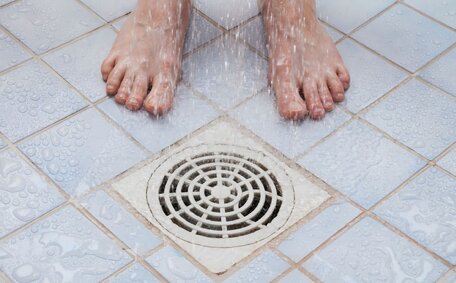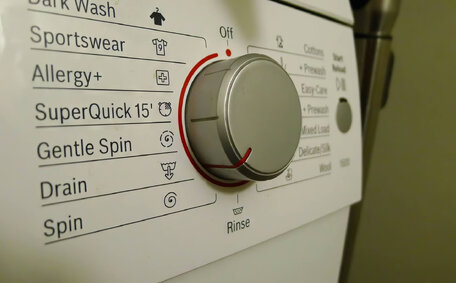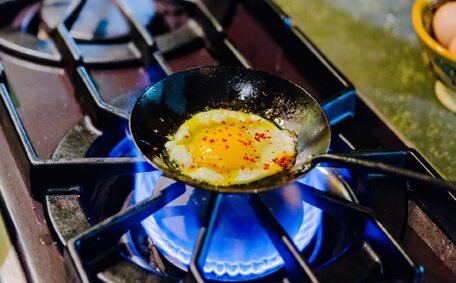
Baking Soda & Vinegar for Cleaning
Using baking soda & vinegar separately for cleaning is very effective; but mixing them dilutes their cleaning power. Learn how to use them properly.
Read MoreHot and cold water are typically supplied via separate pipes from the water heater and the main line to your taps; however, malfunctions may result in an unexpected loss of hot water. The system is designed for consistent hot water supply and temperature stability at your taps, with heated water from your water heater and cold water directly from the mains.
Proper installation and maintenance of hot water tap systems and plumbing is crucial to ensure accurate temperature and prevent running out of hot water. Otherwise, there’s a risk of running out hot water leading to predicaments like the shock of cold water erupting scalding from the shower head, frequently a sign of water heater issues and undesirable heat exchange in the pipes overhead.
During hot weather, the cold water pipes may absorb heat, causing the initial water flow to be warm before returning to the expected cold temperature from the tap. This effect on the water coming through from the tap may be surprising and prompt a home improvement investigation, as initially colder water sitting in the cold pipe absorbs heat from the hot pipe. Initially, when you turn the hot tap on expecting a cool stream, you’re met with water coming out cold tap after some warm water emerges, eventually allowing the cooler water to push through from the main supply. Such a setup helps you avoid scenarios of insufficient hot water, a situation that typically resolves when the ambient temperature falls and normal hot water flow resumes.
When deducing whether the issue, such as unexpectedly running out of hot water, is confined to just one tap or is more pervasive, evaluate the water temperature emanating from your faucet and contrast it with others.
Start by assessing the problematic cold tap that’s dispensing hot water instead of cold, an issue that may impact several appliances. Repeat the process, ensuring the water runs for a few seconds before you verify the temperature at your faucet.
Let the cold tap run for roughly thirty seconds, giving time for the warm water in the pipes to be replaced by the cooler mains supply. If the water remains lukewarm, turn off the hot tap and check a cold tap elsewhere, like in the kitchen or another basin.
If other taps are running cold as expected, then the issue with the hot water coming out your faucet is likely isolated. This suggests a localised issue, possibly a defective faucet cartridge or mixer. Employ a skilled plumber to replace any faulty components and resolve the issue.
However, if warm water emerges when you scrutinise the cold tap in different rooms, this indicates a systemic problem, potentially connected to a low hot water your heater is supplying. In this case, the issue possibly lies with your hot water heater or plumbing impacting your hot water system, enabling hot water to infiltrate the cold water pipes. Arrange for a licenced plumber to inspect your water systems, including the hot water tank.
Several factors can affect your hot water system, leading to reduced provision or erratic water pressure:
To assess your water heater and the distribution of hot water in your house:
Upon detecting malfunctions, knowing what can do next is crucial; make arrangements to schedule your session with a licenced plumber for any necessary repairs or replacements to your water heating apparatus.
Inspecting the water pipes and valves around your home is an important step in considering what can be done if you have issues with water emerging from the tap at incorrect temperatures. There are a few key things to examine:
Conduct a visual inspection of all exposed water pipes, joints, valves, and connections for signs of leaks or corrosion that might disrupt water flow. Make sure to attend to even small leaks, because there’s a chance your pipes can encounter low hot water pressure and a diminished flow rate, prompting a blend between hot and cold water lines. Have a licenced plumber repair any leaks.
Low water pressure can prevent hot water from flowing correctly, potentially causing hot water to siphon back into the cold water pipes. If pressure exceeds 500 kPa, fit a pressure-limiting water valve to ensure proper heating and prevent backflow that could affect consistency. This will prevent further backflow issues.
Incorrect heat trap installation allows hot water to migrate to the cold side, seeping back down into the cold pipe. Ensure they are properly fitted according to plumbing standards. A licenced professional can rectify any installation issues.
It’s vital to maintain proper water pressure and keep hot and cold water pipes separate to prevent supply problems. If problems persist despite troubleshooting, reach out to our team of qualified plumbers to conduct a comprehensive inspection of your plumbing.
Some signs that you may have a water leak include:
Start a comprehensive inspection of your plumbing, examining all exposed pipes, joints, valves, and connections for signs of moisture or leaks. Pay close attention to the flow water rate near water heaters, under sinks, around toilets and at pipe joints.
Facing minor leaks at joints or seals, inspect your links if you spot water emerging from a tap and endeavour to secure them initially; if they persist, you might need help from a professional. For substantial leaks or burst pipes resulting in no water from the tap, promptly shut off the main water supply to reduce damage until repairs are possible.
We recommend contacting your plumber to learn more about any major leak repairs like pipe replacement. Attempting DIY repairs without expertise can often cause your plumbing situation to deteriorate.
A noticeable drop in water pressure or slowed drainage suggests a potential partial blockage in your pipes.
Use a plunger on drain openings or hot water mixed with baking soda to dissolve soap buildup clogging your taps. Commercial drain cleaners or careful use of plumbing snakes may help dislodge minor blockages.
If blockages persist, it’s time to call in a professional plumber with high-pressure jetting equipment to thoroughly clear your drains and restore proper water flow.
While some cold water issues can be resolved with simple troubleshooting, persistent or complex problems necessitate professional plumbing assistance.
Professional help is crucial for quickly addressing issues such as tankless water heater malfunctions, faulty heaters, major leaks, or extensive corrosion or damage. Attempting dangerous DIY repairs without proper qualifications risks further plumbing problems.
If temperature checks at different taps or minor blockage clearance doesn’t improve water flow, it might be time to seek a licenced plumber to diagnose and fix the root issue.
Issues within inaccessible pipework hidden behind walls or under floors also necessitate getting professional equipment and expertise on site.
Contact Lilyfield Plumbing at 1300 349 338 or email [email protected] for a reliable assessment and thorough repairs to restore your hot and cold water supply.
Using baking soda & vinegar separately for cleaning is very effective; but mixing them dilutes their cleaning power. Learn how to use them properly.
Read MoreBlocked drains are usually caused by buildup of hair, grease, debris and more in your pipes. Fix the problem with professional drain unblocking services to get your drains flowing freely again. Contact us for affordable drain unblocking.
Read MoreWhen you suspect a gas leak or damaged gas line, contact a licensed gas fitter immediately to locate and repair it. A gas line repair involves sealing leaks, replacing corroded or damaged pipes and testing all connections for safety before restoring gas supply.
Read MoreLilyfield, 2040 NSW
We will call back as soon as possible.




